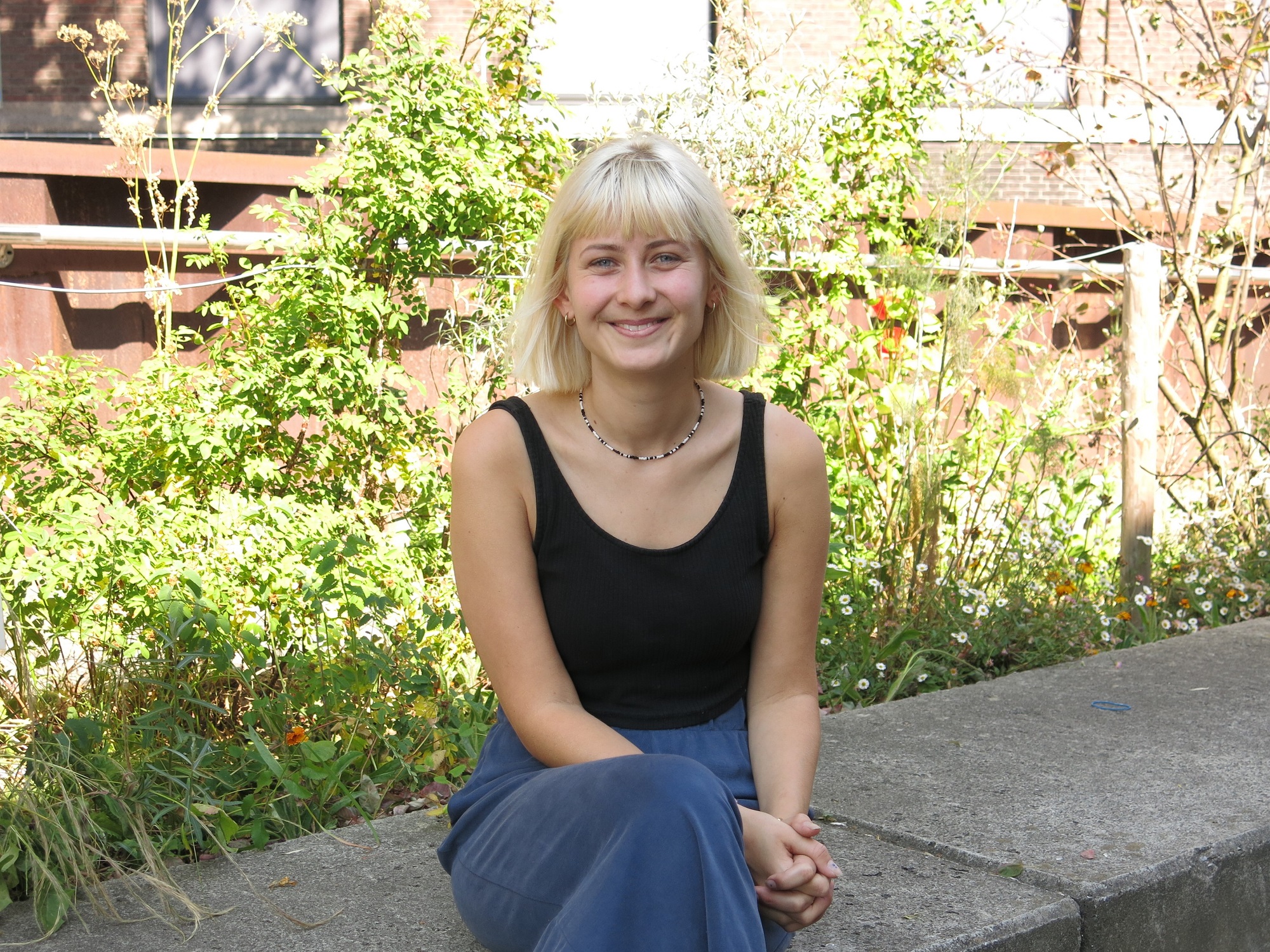Who are the people who study or work at TU Delft? We meet them in Humans of TU Delft. Julia Ravensbergen explores the potential of bio-based materials for house renovation.
Master’s student Julia Ravensbergen: “I wanted to see how you can renovate houses with the vegetation that you can find around the neighbourhood.” (Photo: Heather Montague)
English only
“I came to TU Delft about seven years ago to do a bachelor’s in Architecture and right now I am finishing my master’s in Building Technology. The graduation is this Friday so I am very busy right now but very excited to present everything to my friends and family so that they can see what I have been working on for the past year.
My thesis is about bio-based renovation, but looking at it with a hyper-local approach. First, I looked at the Netherlands as a whole and then focussed on the kind of regional landscapes you can find. Based on this research and previous work in the field, for example work by Stichting Bouwtuin and Boom Landscape, I continued working with three different landscapes that were the most distinctive and different from each other – the clay landscape, the sand landscape, and the peat landscape. The character of these landscapes varies greatly, as does the dominant vegetation that can be found in each of them.
Within these different landscapes, I looked at how you can renovate a typical Dutch house. There is something called a bloemkoolwijk in Dutch, which are these residential areas that were built in the ‘70s and ‘80s. Many of these and other neighbourhoods built around that time will need renovation in the coming years and I wanted to see how you can renovate them with the vegetation that you can find around the neighbourhood.
By using the vegetation as the building material, it creates this hyper-local way of renovating with the bio-based materials that grow in the area. In this way we can upgrade the appearance and insulating properties of the buildings while generating a stronger connection with the surroundings and reducing the carbon footprint of the overall renovation. What people often forget is that the production of building materials also accounts for a big part of the carbon footprint of a building.
Bio-based materials involve a craft and old building methods as well
For part of my research I had a small workshop at the TU Delft botanical garden. I collected all different materials to do experiments with. For example, I went with a reed cutter for a day and cut some reeds and learned about the craft. A lot of these bio-based materials involve a craft and old building methods as well. Reed is very interesting because it is a very old craft and if you look at the history in the Netherlands, it was used a lot for the construction of houses. The reed cutter told me that his family had been reed cutters for generations, but that the craft is becoming less common and is slowly dying out.
In addition to this, I did a lot of experiments with algae, reed and loam, for example. I made some prototypes of different panels that integrated reed, but also willow branches, for example. Some of the final products are the three ‘look-books’ that I made where you can kind of get a feeling of the material and what it could look like on the building. The bloemkoolwijk neighbourhoods are quite monotone and the same in all parts of the Netherlands, but with this hyper-local renovation you can imagine them to be very different with interesting textures and appearances.
In the end, I found that there are a lot of options when it comes to local bio-based renovation. Of course, there are also some obstacles but I think things are possible. With my research, I intended to inspire architects, but also residents or municipalities, basically everyone that wants to listen. I want them to know that biobased renovation is possible. It might take a bit more time, but it also creates an identity of the place and by using the vegetation that is around it, you can actually make the connection stronger.
As for what comes next, that is a big question. My boyfriend and I are thinking of moving abroad after the summer because we feel like we are ready for the next adventure. But first, I think it’s good to celebrate that we are done and relax during the summer break.”
Want to be featured in Humans of TU Delft? Or do you know someone with a good story to tell? Send us an e-mail at humansoftudelft@gmail.com
Heather Montague / Freelance writer



Comments are closed.